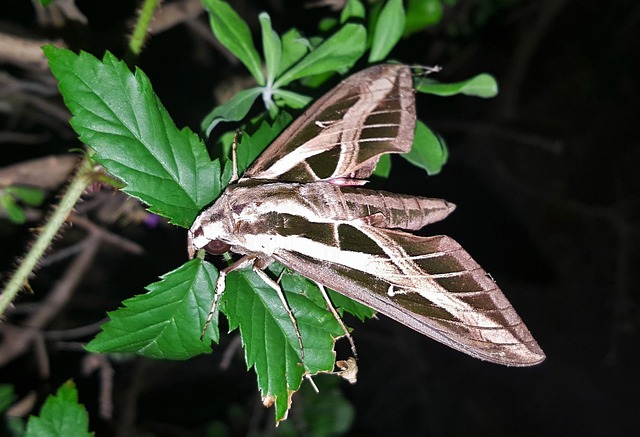As the sun sets, a new kind of creature begins to appear in the dark of night. Nocturnal insects come alive at night, creating a world of activity that goes unnoticed by most. A nocturnal insect is one that is designed to thrive during the dark hours of night, when many predators are not active. In this article, we will discuss the different types of nocturnal insects which bugs are most active at night.
Types of Nocturnal Insects
Moths
Moths are one of the most iconic nocturnal insects. Butterflies are active during the day, while moths largely come out at night. There is an incredible variety of moth species, but they are generally identified by their furry wings and dull colors. Moths use their wings to fly through the night, finding food and avoiding predators.
Beetles
Beetles are another type of insect that are primarily active during the night. So many species of beetles have adapted to living life at night, that it is one of the most culturally recognized nocturnal insects. Beetles have incredibly hard shells, which protect them from predators, and large eyes which allow them to navigate the dark terrain at night.
Crickets
Crickets are one of the most prominent nocturnal insects, with their characteristic chirping sound heard at night. Crickets are remarkable adaptations of the insect world and evolved to hide during the day and forage for food at night. Crickets have large eyes that help them see in the dark, and their long antennae provide them with a sense of smell to help find food.
Grasshoppers
Grasshoppers are another popular nocturnal insect that brave the night. Grasshoppers are generally a peaceful species and can be identified by their long legs and large eyes. During the night, grasshoppers are searching for food and water, and they can travel long distances in pursuit of resources.
Bats
Though they are not technically insects, bats are commonly considered to be part of the nocturnal insect family. Bats are largely active during the dark hours of night, and they can travel up to 100 miles (161 kilometers) in search of food. They have very sensitive hearing, which allows them to catch prey through echolocation.
People also ask:
What is the difference between nocturnal and crepuscular insects?
Nocturnal insects are active during the night, while crepuscular insects are more active during twilight hours, such as dawn and dusk.
Are there any insects that are strictly nocturnal?
Yes, there are multiple species of strictly nocturnal insects, such as moths, beetles, grasshoppers and crickets.
What types of insects are not nocturnal?
Most species of ants, bees, wasps, flies and butterflies are not nocturnal and do not prefer the night hours.
Do all insects become inactive during the night?
No, while some species of insects do become inactive during the night, there are many others that choose to remain active in order to pursue food, water or mates during the night.
Are there any insects that are both nocturnal and diurnal?
Yes, some insects such as house centipedes, cockroaches and silverfish are both nocturnal and diurnal and are active day and night.
Final Words
Nocturnal insects are some of the most fascinating members of the insect world. They vary in size, shape and lifestyle, and they often adapt to their environment in remarkable ways. Through their incredible adaptations, nocturnal insects are able to thrive in the night, even when the rest of the world sleeps.

